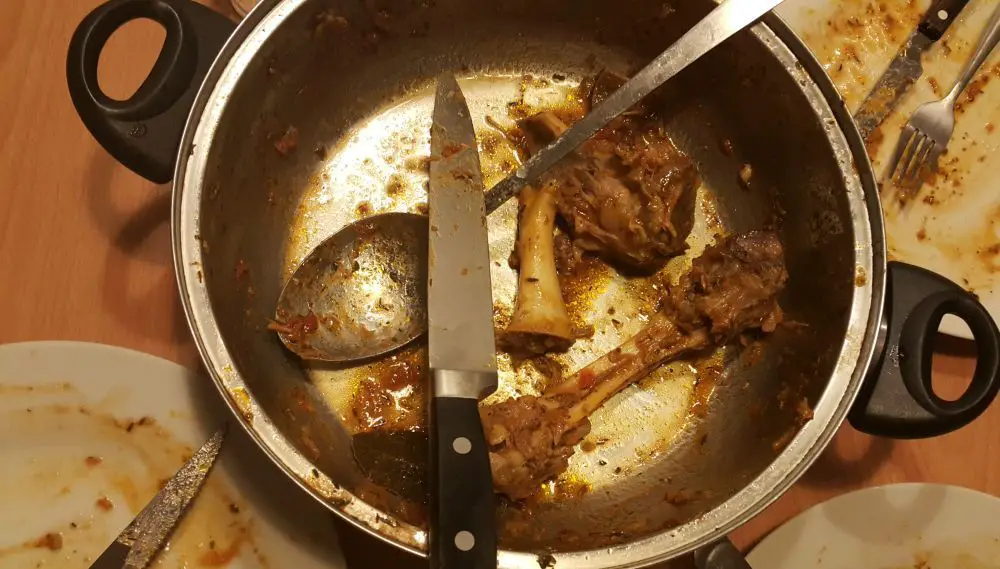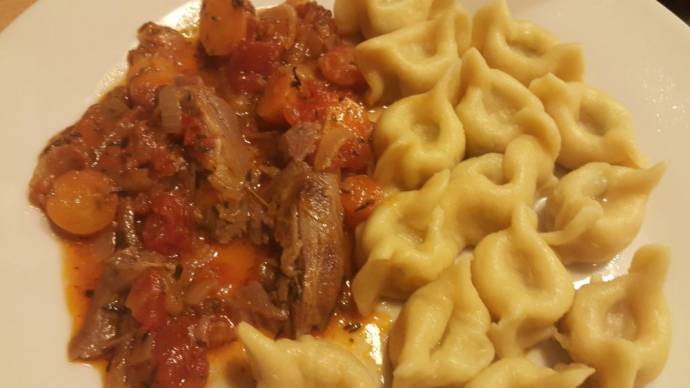April 22, 2018
As promised in our last Recipe of the Week, we will prepare bakalca this week, the favourite companion of žlikrofi on a plate.
Bakalca, not surprisingly, also originates from Idrija, is a stew “to kill a wether”, figuratively and literally, as it is usually prepared with mutton (a ‘wether’ is a castrated ram), although a beef version is very common as well, since this kind of meat is more available these days.
However, on our trip to the butchers to get some beef we were lucky to stumble upon some lamb, and got what turned out to be a wonderful choice, lamb shoulder that was cut – well, sawn – into three pieces as we watched.
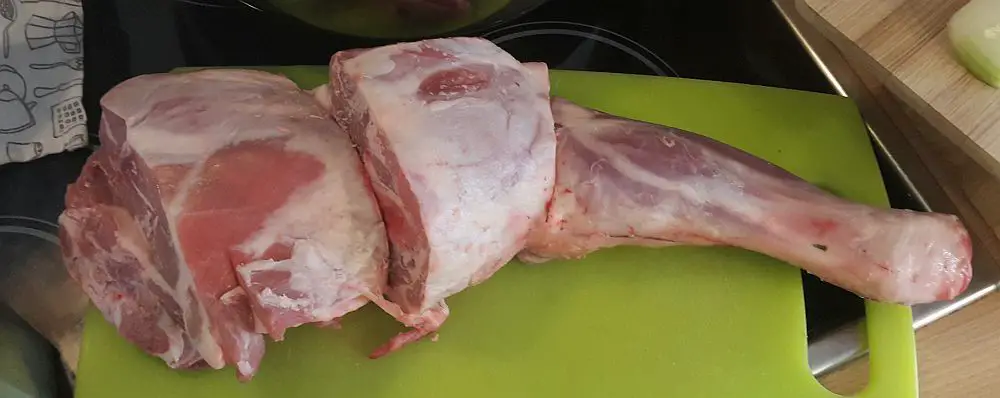
![By GameKeeper [Public domain], from Wikimedia Commons.jpg](/images/By_GameKeeper_Public_domain_from_Wikimedia_Commons.jpg)
By Game Keeper, (public domain), Wikimedia Commons
Before we get to the rest of the ingredients, a couple of words on meat. The lamb we bought looked frozen stiff. On touch, however, it was quite warm and yet very hard, almost impossible to tell the bone from meat.
As first-time lamb cooks we had no idea whether this was normal or not, so without much thinking we put our meat into the fridge. When we took it out the next day it was noticeably softer, and softened up even more after left at room temperature for several hours.
It appears that we bought our lamb in the stage of rigor mortis, and luckily we didn’t bother to cook it immediately, as this appears to be a big no-no in every butcher's cook book, as: any meat if cooked while the muscles are still in rigor turns out extremely tough (for detailed explanation of this phenomenon click here).
Anyhow, once rigor mortis has been overcome the stew was relatively easy to cook. Altogether it took about two and a half hours, and most of the work was done by itself.
If you are going to be using lamb then get ready for some stench to develop while cooking – just make sure you are equipped with lots of white wine, thyme and tomatoes before the meat hits the pot.
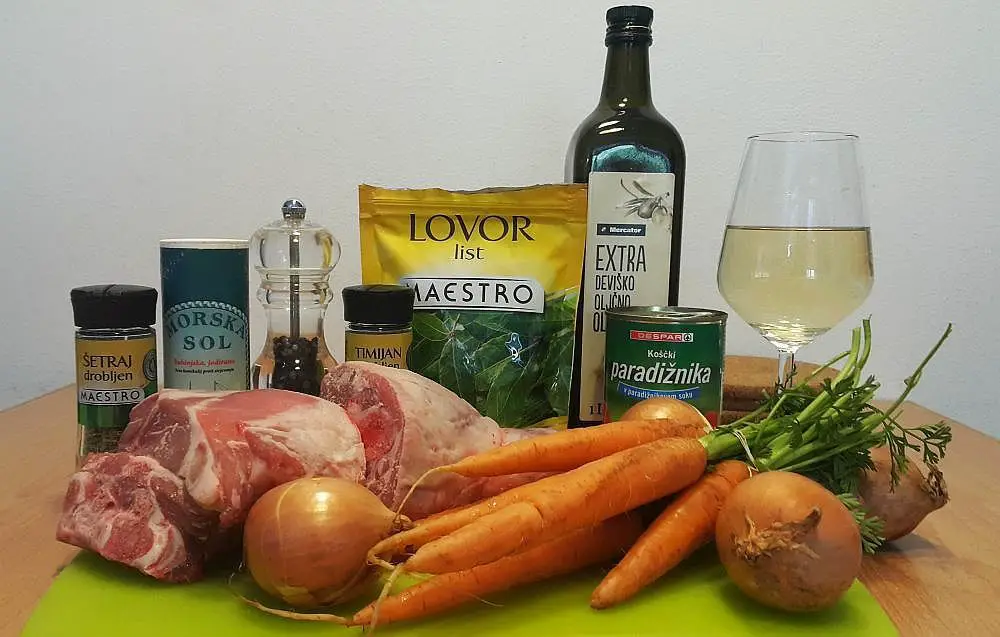
Ingredients
Ingredients:
olive oil
3 big or 5 small onions
5 carrots
1 lamb shoulder or equivalent amount of beef (1/2 – 1 kg)
1/2 l white dry wine
2 dl water
1 can of diced tomatoes
2 bay leaves
savory (šetraj)
thyme
salt
pepper
We poured about a tablespoon of olive oil into a wide pot, or you could use a high-sided cooking pan, and heated it a little (below the smoking point). While the pan was getting hot we took a look at our meat and decided to break the two parts of the shank into half, asking the break between the muscles, so that the surrounding fats and connecting tissue would be more exposed to the broth.
We placed the meat into the pot, turning it on each side. Meanwhile we cut the onions and added them to the meat, stirring when needed.
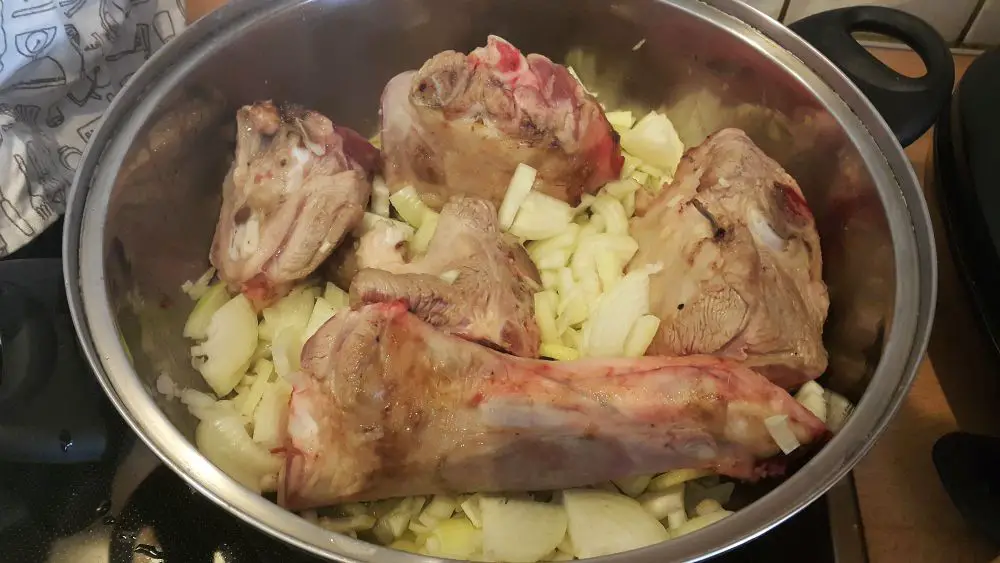
We then added the chopped carrots, salt, thyme, savoury, bay leaves and pepper.
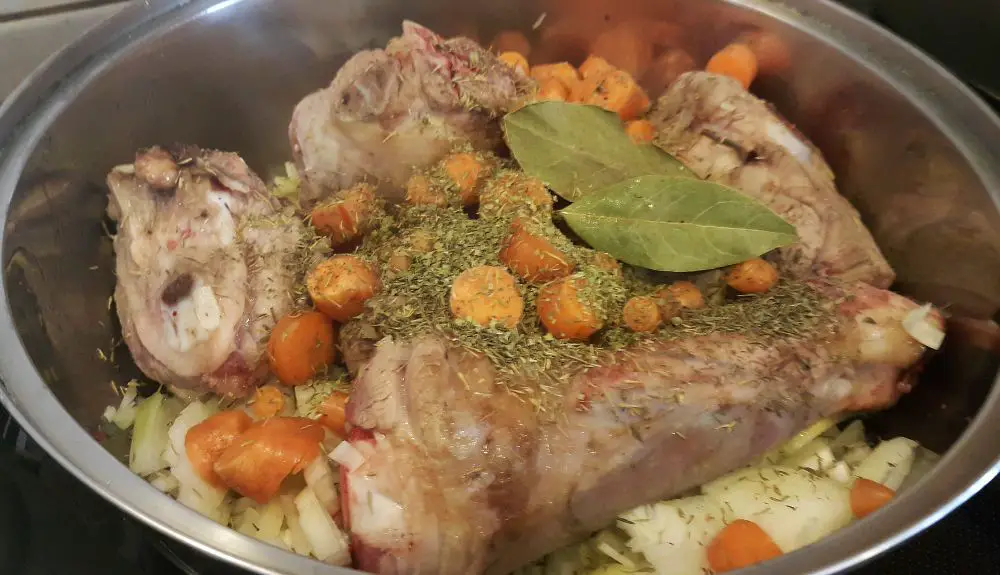
We stir fried all of this until the onions softened, then added some water and simmered this until the carrots lost some of their crunchiness. Then it was time to add the wine and remaining water, cover the pot, and take a break.
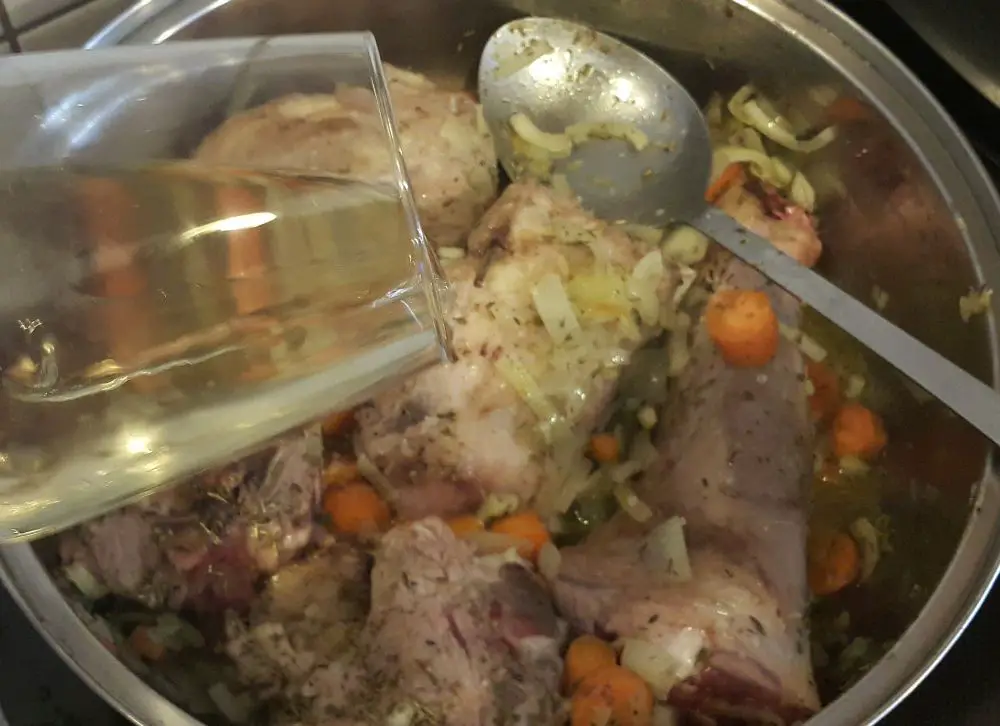
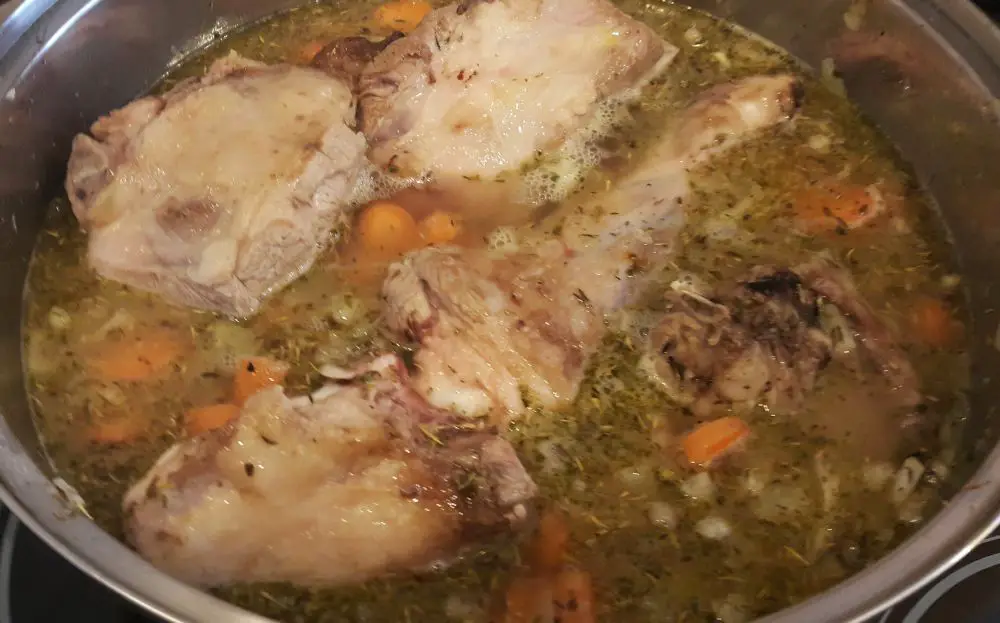
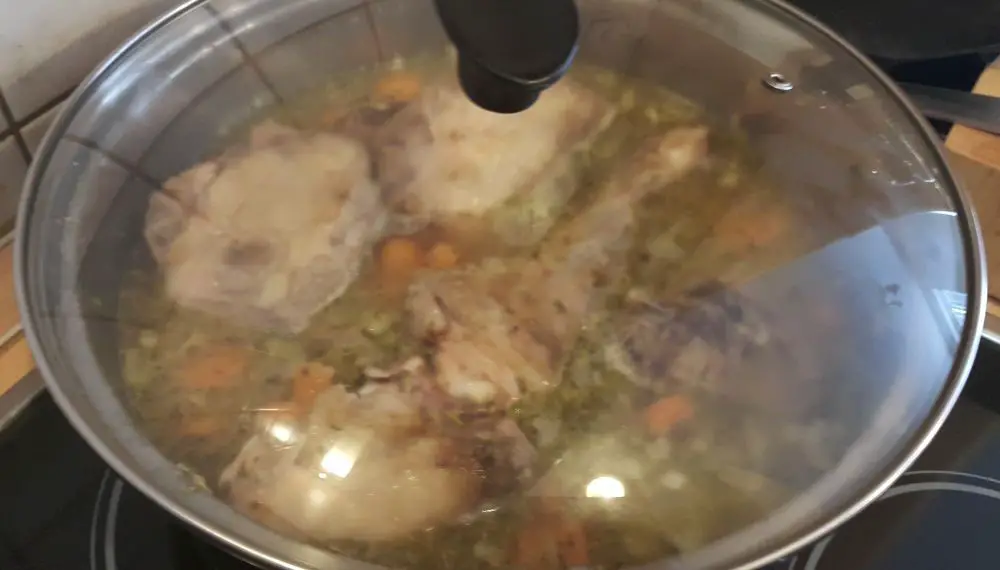
When your stew starts boiling, reduce the heat and put the lid on the rim of the pot so that the steam will have a way to escape. At this point your lamb should have developed quite a strong smell. At least ours did. We overcame this mainly by adding more thyme, more wine (eventually we used about half a litre if not a bit more), and finally, when the meat seemed to be getting soft and the fats started to dissolve, a can of tomatoes (which, being acidic, will prevent things from softening if added too soon). We also opened the windows to clear the air.
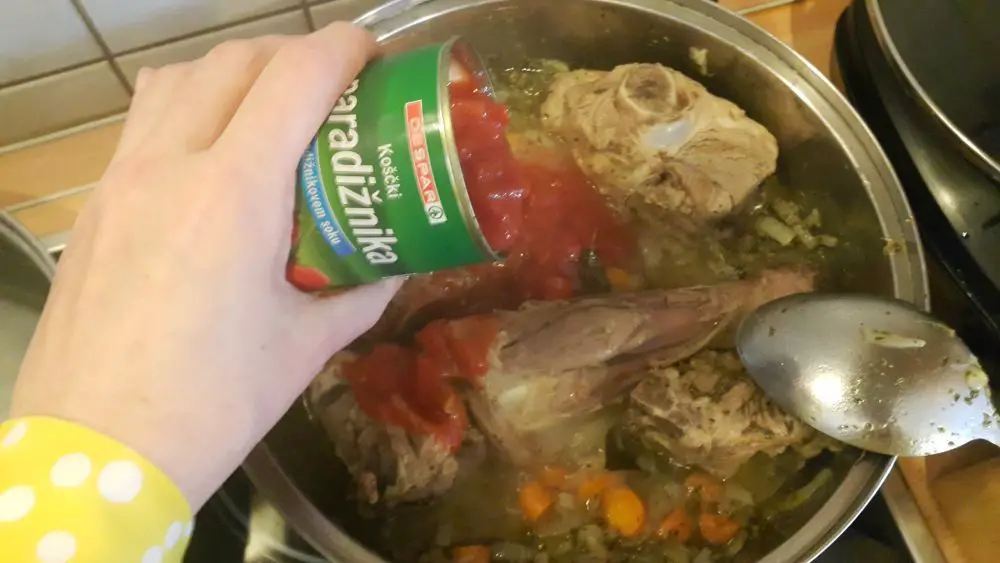
Now all the ingredients are in place, all you need is to let it simmer, come by from time to time, turn the meat and taste the sauce to see if it needs more salt, wine or herbs. After about two hours from placing the lamb in your pot the smell of mutton should be more or less gone, and if you can get to this point at least half an hour before your guests arrive then they would have no idea your house smelled like a goat barn just two hours ago.
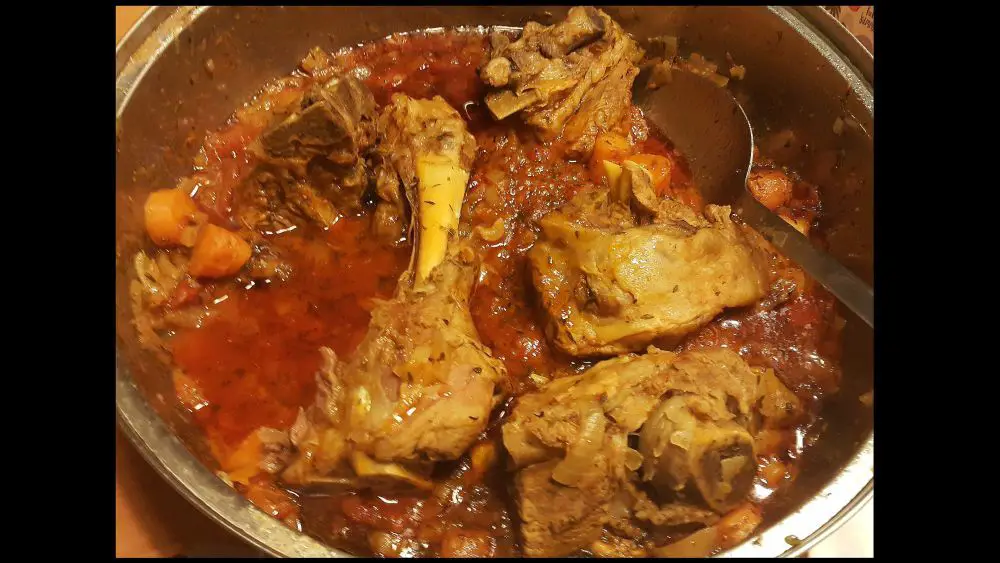
From the stove straight to the table: it smelled fantastic
We let everyone to serve themselves.
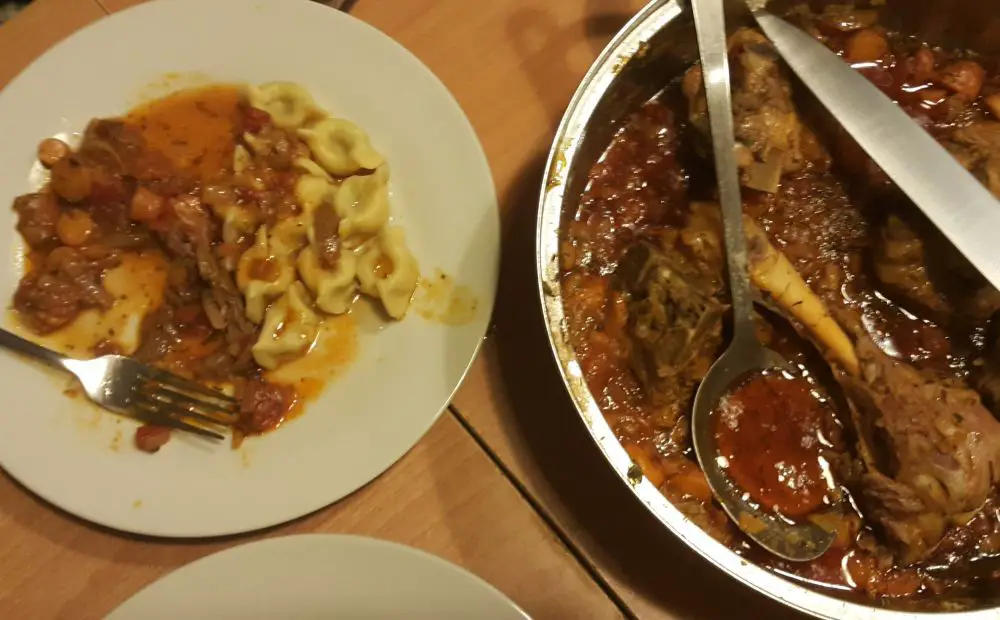
With the fat dissolved the meat was extremely tender, and it was the best stew we’ve had in a long while. Moreover, due to the relatively high amounts of (baby-)fat that were on the lamb adding some acidity in the form of wine and tomatoes turned out to be a very good idea. Large amounts of herbs, especially thyme, worked wonders as well.
Žlikrofi with bakalca was perhaps the best dinner we’ve ever made, and certainly the best in this series. All the work was certainly worth it, and the only problem was we all ate too much to really enjoy the coffee and Ljubljana pancakes.
Dober tek!
